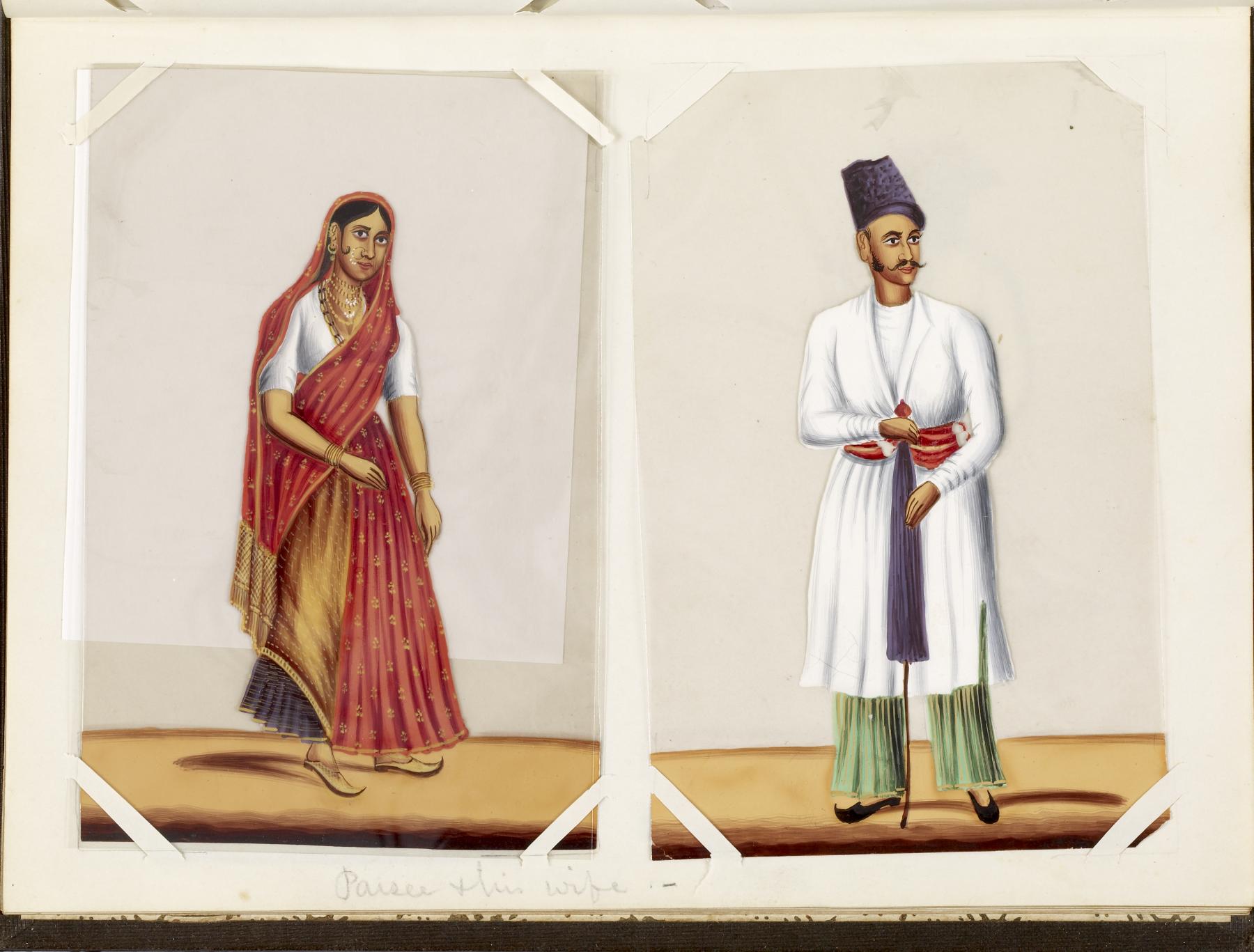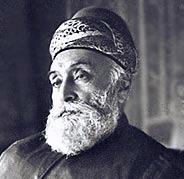|
Dastur
A dastur ( ), sometimes spelt dustoor, is a term for a Zoroastrian high priest who has authority in religious matters and ranks higher than a mobad or herbad. In this specific sense, the term is used mostly among the Parsis of India. The term has also been used in a secular sense to refer to a prime minister, minister or government councillor. The first person to be accorded the title Dastur was Meherji Rana (born 1514 at Navsari). He was invited by Akbar to his court in 1578 AD. He was accorded the title in 1579 AD by the local Zoroastrian priests thus establishing a seat (Gaddi, similar to the seat of a Bhattaraka or Sankaracharya Shankaracharya (, , "Adi Shankara, Shankara-''acharya''") is a religious title used by the heads of amnaya monasteries called mathas in the Advaita Vedanta tradition of Hinduism. The title derives from Adi Shankara; teachers from the successive ...). Dastur Kaikhushru Cowasji Ravji became the eighteenth successor to the seat and title of Meherji ... [...More Info...] [...Related Items...] OR: [Wikipedia] [Google] [Baidu] |
Zoroastrian Priests
Zoroastrianism ( ), also called Mazdayasnā () or Beh-dīn (), is an Iranian religions, Iranian religion centred on the Avesta and the teachings of Zoroaster, Zarathushtra Spitama, who is more commonly referred to by the Greek translation, Zoroaster ( ). Among the world's oldest organized faiths, its adherents exalt an Creator deity, uncreated, Omnibenevolence, benevolent, and List of knowledge deities#Persian mythology, all-wise deity known as Ahura Mazda (), who is hailed as the supreme being of the universe. Opposed to Ahura Mazda is Ahriman, Angra Mainyu (), who is personified as a List of death deities#Persian-Zoroastrian, destructive spirit and the adversary of all things that are good. As such, the Zoroastrian religion combines a Dualism in cosmology, dualistic cosmology of good and evil with an eschatological outlook predicting the Frashokereti, ultimate triumph of Ahura Mazda over evil. Opinions vary among scholars as to whether Zoroastrianism is monotheistic, polyth ... [...More Info...] [...Related Items...] OR: [Wikipedia] [Google] [Baidu] |
Herbad
Hērbad (also ''hīrbad'', ''hērbed'' or ''ērvad'') is a title given to Zoroastrian priests of minor orders. In the present day, ''hērbad'' is the lowest rank in the Zoroastrian priesthood, and is granted following the basic ''navar'' ceremony that marks the beginning of theological training. Unlike a '' mobed'' or '' dastūr'', a ''hērbad'' may not celebrate the ''yasna'', the main service. He may, however, assist. A ''hērbad'' may also not officiate at a recitation of the ''Vendidad'', which is reserved for priests of higher grade. Amongst lay Zoroastrians, the three terms are used interchangeably. Unlike ''mobed'' but like ''dastūr'', ''hērbad'' may be adopted as a professional title in a person's name. History of term Middle Persian 𐭧𐭩𐭫𐭯𐭲 ''harpat'' ( Pahlavi ''ʼyhlpt'') derives from Avestan 𐬀𐬈𐬚𐬭𐬀𐬞𐬀𐬌𐬙𐬌 ''aeθrapaiti'', which the Avesta uses denote a priestly teacher whose students (''aethrii'') would be taught to recite t ... [...More Info...] [...Related Items...] OR: [Wikipedia] [Google] [Baidu] |
Zoroastrianism In India
Zoroastrianism, an Iranian religion, has been present in India for thousands of years. Though it split into a separate branch, it shares a common origin with Hinduism and other Indian religions, having been derived from the Indo-Iranian religion. Though it was once the majority and official religion of the Iranian nation, Zoroastrianism eventually shifted to the Indian subcontinent in light of the Muslim conquest of Iran, which saw the Rashidun Caliphate annex the Sasanian Empire by 651 CE. Owing to the persecution of Zoroastrians in the post-Sasanian period, a large wave of Iranian migrants fled to India, where they became known as the Parsi people, who now represent India's oldest Zoroastrian community. Later waves of Zoroastrian immigration to India took place over the following centuries, with a spike in the number of these refugees occurring during the Safavid conversion of Iran to Shia Islam and again during the reign of the Qajar dynasty, whose persecution of Zoroastrians ... [...More Info...] [...Related Items...] OR: [Wikipedia] [Google] [Baidu] |
Zoroastrian Rituals
Zoroastrianism ( ), also called Mazdayasnā () or Beh-dīn (), is an Iranian religion centred on the Avesta and the teachings of Zarathushtra Spitama, who is more commonly referred to by the Greek translation, Zoroaster ( ). Among the world's oldest organized faiths, its adherents exalt an uncreated, benevolent, and all-wise deity known as Ahura Mazda (), who is hailed as the supreme being of the universe. Opposed to Ahura Mazda is Angra Mainyu (), who is personified as a destructive spirit and the adversary of all things that are good. As such, the Zoroastrian religion combines a dualistic cosmology of good and evil with an eschatological outlook predicting the ultimate triumph of Ahura Mazda over evil. Opinions vary among scholars as to whether Zoroastrianism is monotheistic, polytheistic, henotheistic, or a combination of all three. Zoroastrianism shaped Iranian culture and history, while scholars differ on whether it significantly influenced ancient Western ... [...More Info...] [...Related Items...] OR: [Wikipedia] [Google] [Baidu] |
Parsi People
The Parsis or Parsees () are a Zoroastrian ethnic group in the Indian subcontinent. They are descended from Persian refugees who migrated to the Indian subcontinent during and after the Arab-Islamic conquest of Iran in the 7th century, when Zoroastrians were persecuted by the early Muslims. Representing the elder of the Indian subcontinent's two Zoroastrian communities, the Parsi people are culturally, linguistically, and socially distinct from the Iranis, whose Zoroastrian ancestors migrated to British-ruled India from Qajar-era Iran. The word ''Parsi'' is derived from the Persian language, and literally translates to ''Persian'' ().Parsee, n. and adj. – Oxford English Dictionary . oed.com. Retrieved on 2015-03-03. According to the 16th-century Parsi epic '' [...More Info...] [...Related Items...] OR: [Wikipedia] [Google] [Baidu] |
Zoroastrianism In Iran
Zoroastrianism is considered to be the oldest religion still practiced in Iran. It is an Iranian religions, Iranian religion that emerged around the 2nd millennium BCE, spreading through the Iranian Plateau, Iranian plateau and eventually gaining official status under the Achaemenid Empire in the 6th century BCE. It remained the Iranian state religion until the 7th century CE, when the Muslim conquest of Persia, Arab conquest of Persia resulted in the fall of the Sasanian Empire to the nascent Rashidun Caliphate. Over time, the persecution of Zoroastrians led to them becoming a religious minority amidst the Islamization of Iran, as many fled east to Parsis, take refuge in India. Some of Zoroastrianism's holiest sites are located in Iran, such as Yazd. Today, Iran has the second- or third-largest Zoroastrian population in the world, behind only India and possibly the Kurdistan Region, Kurdistan Region of Iraq. The official Iranian census of 2011 recorded a total of 25,271 Zoroast ... [...More Info...] [...Related Items...] OR: [Wikipedia] [Google] [Baidu] |
Mobed
A mobed, mowbed, or mobad (Middle Persian: 𐭬𐭢𐭥𐭯𐭲) is a Zoroastrian cleric of a particular rank. Unlike a '' herbad'' (''ervad''), a ''mobed'' is qualified to serve as celebrant priest at the Yasna ceremony and other higher liturgical ceremonies. A ''mobed'' is also qualified to train other priests. Usage In lay use, the term is also used as an honorific to denote any Zoroastrian priest of any rank. Hormizd I appointed Kartir ''mowbadān-mowbad'' "high priest of ''priests''". The term mobad is a contraction of Old Persian ''magupati'', the first half of the expression derived from and . The word was borrowed as ka, მოგუ-ი ''mogu-i'' and and from Parthian as . Through and , proto-Iranian ''*magu-'' is also identified as the origin of the Latin word ''magus'', a " magi''an''". Through the Greek adjective and , mobed is distantly related to the English language word " magic". Mobedyars Priests in the community in India, the Parsis, are requ ... [...More Info...] [...Related Items...] OR: [Wikipedia] [Google] [Baidu] |
Sankaracharya
Shankaracharya (, , "Adi Shankara, Shankara-''acharya''") is a religious title used by the heads of amnaya monasteries called mathas in the Advaita Vedanta tradition of Hinduism. The title derives from Adi Shankara; teachers from the successive line of teachers retrospectively dated back to him are known as Shankaracharyas. Etymology The word Shankaracharya is composed of two parts, Shankara and Acharya. Acharya is a Sanskrit word meaning "teacher", so Shankaracharya means "teacher of the way of Adi Shankara, Shankara". Establishment of the tradition Adi Shankara, known as Adi Shankaracharya, set up four monasteries known as Mathas or Peethams, in the North, South, East and West of India, to be administered by moksha, realised men who would be known as Shankaracharyas. They would take on the role of teacher and could be consulted by anyone with sincere queries of a spiritual nature and they would guide the humanity in times of trouble and provide solace. Another monastery ... [...More Info...] [...Related Items...] OR: [Wikipedia] [Google] [Baidu] |
The Religious Head Of Parsi Community, Shri Dastur Khurshed Kaikobad Dastoor Calling On The Prime Minister, Shri Narendra Modi, In New Delhi On June 30, 2014
''The'' is a grammatical article in English, denoting nouns that are already or about to be mentioned, under discussion, implied or otherwise presumed familiar to listeners, readers, or speakers. It is the definite article in English. ''The'' is the most frequently used word in the English language; studies and analyses of texts have found it to account for seven percent of all printed English-language words. It is derived from gendered articles in Old English which combined in Middle English and now has a single form used with nouns of any gender. The word can be used with both singular and plural nouns, and with a noun that starts with any letter. This is different from many other languages, which have different forms of the definite article for different genders or numbers. Pronunciation In most dialects, "the" is pronounced as (with the voiced dental fricative followed by a schwa) when followed by a consonant sound, and as (homophone of the archaic pronoun ''thee' ... [...More Info...] [...Related Items...] OR: [Wikipedia] [Google] [Baidu] |
Bhattaraka
A Bhaṭṭāraka (; ) heads traditional Digambara Jain institutions. He is responsible for training scholars, maintenance of libraries, managing endowments, presiding over installation ceremonies and running Jain institutions. Overview The term ''bhaṭṭāraka'' was used for Virasena, Bhadrabahu and other notables. It has also been used for the Tirthankaras. It was in the past used for leaders of religious orders in Shaivism, Buddhism and other groups, but currently it is applied to heads of Digambara Jain institutions. Unlike a Digambara monk, a bhaṭṭāraka wears an orange robe, stays in a single place and is involved in management of assets of the institution. Several of the Bhattarak seats were termed "Vidyasthana" i.e. centers of learning. These include Jaipur, Delhi, Gwalior, Ajmer, Nagaur, Rampur-Bhanpura, Karanaja, Surat, Kolhapur, Jinakanchi, Penukonda, Malkhed, Vijayanagara, Varanga and Hummacha. The role of a bhaṭṭāraka is described by Brahm Gyansag ... [...More Info...] [...Related Items...] OR: [Wikipedia] [Google] [Baidu] |
Navsari
Navsari is the ninth biggest city in the state of Gujarat in India. It is the administrative headquarters of Navsari District. Navsari is between Surat and Mumbai. It is a twin city of Surat, 37 km to the north. At the 2011 Census of India, Navsari was the 16th biggest city of Gujarat state. It ranked 10th most populous city of Gujarat in the 1991 Census of India and 2001 Census of India. Dandi village near Navsari was the focal point of the great Salt March led by Mahatma Gandhi during civil disobedience movement of India. History Navsari was originally known as "Navasarika", and was the capital of a ''vishya'' (an administrative unit) in the Lata (region), Lata region. It is identified with "Nusaripa", a city mentioned in Ptolemy's 2nd century Ancient Greek, Greek-language work ''Geography (Ptolemy), Geography''. The Chalukyas of Navasarika, who governed the area around Navsari as subordinates of the Chalukyas of Vatapi, repulsed an Umayyad campaigns in India, Umayy ... [...More Info...] [...Related Items...] OR: [Wikipedia] [Google] [Baidu] |






